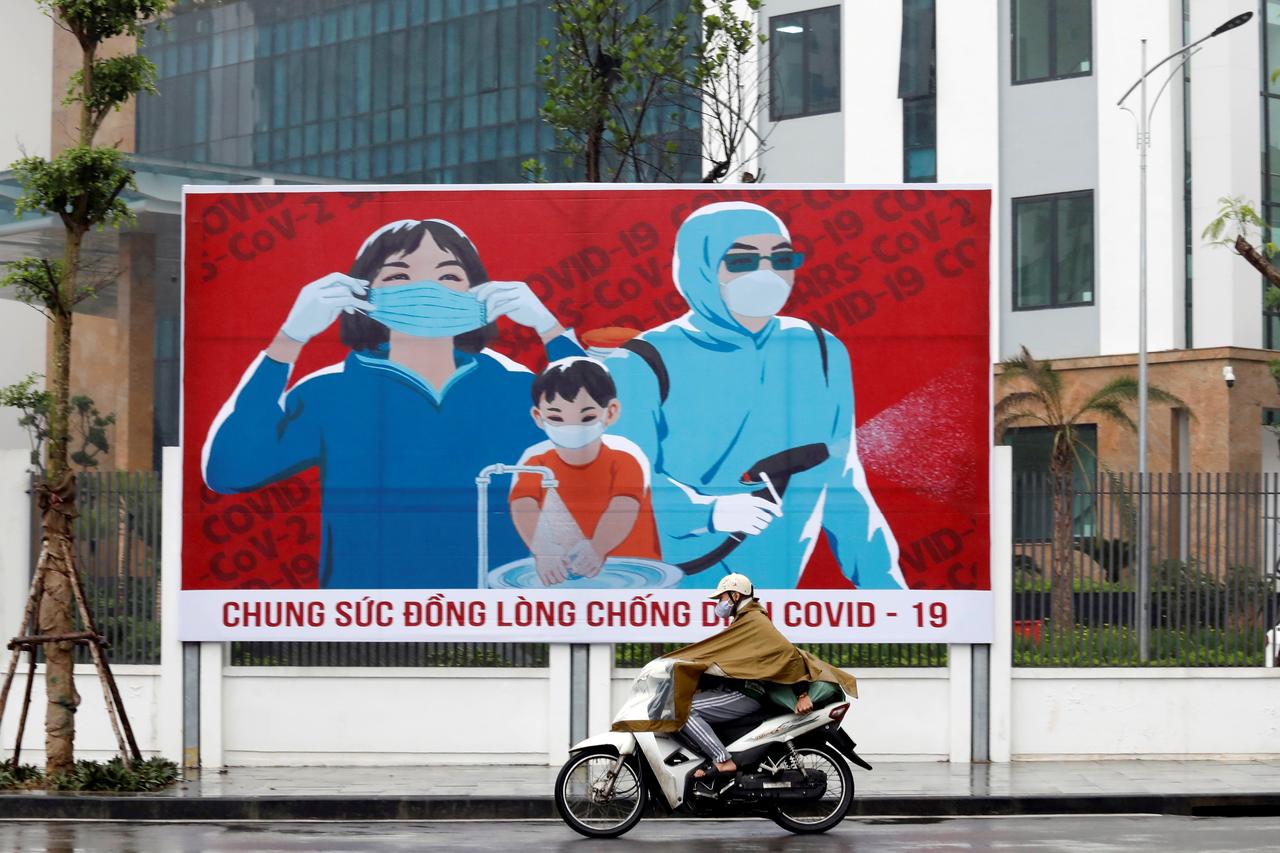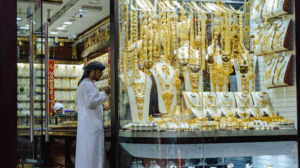Although it is still too early to draw any final conclusion on how Vietnam has fared in tackling the Covid-19 crisis, we can however sketch out some preliminary observations that will need to be either confirmed or infirmed in the near future. This article aims at gathering information describing the way Vietnam has been dealing with the Covid-19 pandemic so far, from a sanitary, economic and geopolitical point of view.
A total victory on the sanitary front
On its web page dedicated to the evolution of Covid-19, the Vietnamese Ministry of Health indicates that, as of May 18th, Vietnam has recorded 324 cases of people who tested positive to the virus, while the country has not officially registered any fatality linked to the epidemic. As such, Vietnam is now considered, with a handful of other Asian countries such as Taiwan and South Korea, to be one of the best performing countries worldwide in handling the Covid-19 crisis.
Knowing that the national healthcare system would not be able to cope with a massive wave of hospitalizations, Vietnam took drastic measures from the onset of the crisis, fully capitalizing on its 2003 SARS experience.
The epidemic was almost immediately considered by the authorities as well as the media as an “unequal war, and that it was necessary to protect itself and to kill the enemy in the bud“. The authorities developed an ad hoc “warrior” doctrine for its population, which has always been fully aware of what the concept of national “struggle” and “resistance” meant. In parallel, blogs, social networks (under strict control of the authorities, particularly Facebook) and a Wikipedia page for Covid-19 in Vietnam have also been activated to follow and report on the development of the epidemic. In addition, the population was informed by SMS and voice messages to stay at home. This invasion of privacy has been widely accepted as a necessary evil to fight the epidemic.
At the political and administrative levels, as of January 30th, a unique coordination structure was created: the National Committee on Coronavirus Prevention and Control, headed by Vice-Prime Minister Vu Duc Dam (also Acting Minister of Health). This central structure has been replicated at the ministry, province, and State-Owned Entreprises (SOEs) levels, thus bringing national coherence to otherwise autonomous provincial and local decisions.
The Vietnam – China air routes were closed as early as the end of January, followed by a gradual shutdown of rail links between the two countries. Chinese workers were put into confinement in Vietnamese industrial zones as early as February. In early March, an imported case (a young Vietnamese woman who returned to Vietnam from the Fashion Week in Milan) revived the epidemic, thus creating a wave of virulent reprobation from the Vietnamese citizens. It should also be noted that, out of the total cases, 45 were foreigners, mostly Western tourists nicknamed “Covid” by the Vietnamese population. As a consequence, a 14-day mandatory confinement in a Vietnamese military base was instituted for people returning to Vietnam.
When considering the total number of infections, there is no doubt that official narratives will (and have already started to) praise the country’s approach to public health… The Covid-19 epidemic has been fairly contained and no new wave of infections as a result of the gradual de-confinement (which started in some provinces on April 23rd) has been recorded.
Fragile economic conditions
On March 27th, the General Statistics Office reported that Vietnam’s GDP growth hit 3.8% in the 1st quarter of the year, the lowest level recorded since 2010. The most affected sector was the hospitality industry, with dwindling tourist arrivals, mostly from China, South Korea and the US. Whereas total exports value remained stable, the textile and seafood segments were particularly hit by large numbers of order cancellations from the EU, the US and China as a result of widespread lockdowns.
A telling illustration of this economic contraction, emblematic SOE Vietnam Airlines posted an historical 2,600 billion VND loss (111 million USD) in the 1st quarter of the year.
For the sole month of March, a Vietnamese magazine indicated that more than 10,000 companies stopped their activities or went bankrupt as a result of Covid-19. Moreover, it remains difficult to assess the real impact of the Covid-19 crisis on small shops, restaurants and street hawkers, as a large part of them are still under the umbrella of the “informal economy”. But it appears all too certain that this sector of the economy will bear the brunt of the crisis, thus contributing to an additional impoverishment of the working and middle-classes…
In fact, three weeks of strict confinement have already provoked an unprecedented wave of protests among the Small and Medium-sized Enterprise (SME) owners and employees. Employees in particular have vented on social media their frustration and impatience to return to work and to be able to “feed their families”. In mid-May, although the economy has re-entered a normal phase, about 40% of workers have lost their jobs or have yet to return to normal working conditions.
The Vietnamese authorities promulgated Directive 11/CT – TTg – March 4th, 2020 to help enterprises cope with this difficult situation, ordering interest rates and bank service fees adjustment, reducing loan-processing time, etc… However, as a result of credit restrictions, it appears that only 2.9% of SMEs managed to qualify for government aid…
This pandemic has also unleashed a new trend in Foreign Direct Investment (FDI) in Vietnam. Not only did FDI fell by 15% year-on-year in the first four months of 2020, but foreign investors have turned to buying existing businesses instead of going for greenfield investment. According to the Ministry of Planning and Investment, although the number of newly registered FDI projects decreased, the number of Vietnamese companies in which foreign investors have acquired shares rose by 33 percent, benefiting from the drop in stock-market prices and companies’ valuations. Japan ranked first among the most active foreign investors, followed by South Korea and Singapore, showing particular interest in manufacturing, wholesale, retail and automobile and motorbike servicing.
Chinese investors have also been on a buying spree of Vietnamese assets. Of particular interest has been land situated near the Vietnam-China border and in strategic areas, and concerns about 150 enterprises with a global investment amount of 31 billion USD in sectors as varied as hotels, restaurants, tourism, entertainment, garment, aquaculture, leather shoes, packaging, children’s toys and electronic components.
Tensions escalation in the South China Sea
The ASEAN Defense Senior Officials’ Meeting (ADSOM) was held in Hanoi on May 15th, chaired by Colonel General (CG) Nguyen Chi Vinh, Deputy Minister of Defense and Vietnam’s ADSOM Leader. During this meeting, CG Vinh stated that the situation in the East Sea (South China Sea) has been witnessing “new and more complicated developments (…) that are endangering the peace and stability in the region”.
Vietnam is often considered as the most assertive opponent to China’s territorial claims in the East Sea. Vietnam opposes moves by China to reclaim land in the Spratly chain and has criticized Beijing’s control of the Paracel Island. Particularly worrying for Hanoi has been China’s renewed aggressiveness in this matter during the Covid-19 crisis.
In April, China approved the establishment of two districts (Xisha District and Nansha District) to administer islands and reefs in the disputed South China Sea, in an apparent bid to strengthen its claim to sovereignty over the area encompassing the Paracels and the Spratlys… These two districts will be under the supervision of the town of Sansha, created in 2012, and located in the Paracel Islands. Sansha will be tasked to look after about 2 million square kilometers of water, including all of the Paracels, the Spratlys and Scarborough Shoal.
In the same month, a Chinese coast guard ship sunk a Vietnamese fishing vessel in disputed waters off the Paracel Islands. Two weeks later China redeployed its geological survey ship (Haiyang Dizhi 8), which entered waters near Malaysia.
According to Prof. Alexander Vuving of the Asia-Pacific Center for Security Studies (APCSS): “It seems that even when dealing with the Covid-19 epidemic, China has not given up its strategic ambition. China wants to create a new standard in the South China Sea where it aspires to impose everything at its will and to do so, China is becoming more and more aggressive.”
This view has also been supported by Vietnamese Minister of Planning and Investment Nguyen Chi Dung who declared that the economic situation in Vietnam is also affected by the situation in the East Sea and China’s “expansionism”. A statement which aligns perfectly with US views at a time when America intensifies its presence in the South China Sea.
On the other hand, the Minister of Defense of Vietnam indicated that it is forbidden for foreigners to use Vietnamese borders to “destroy” other countries, probably referring to the renting of Cam Ranh Bay harbor installations to foreign countries’ navies.
What lies ahead for Vietnam ?
The successful sanitary policy implemented to fight Covid-19 was made possible by the strong cultural and political cohesiveness of Vietnamese society. The “identify-test-isolate” triptych was strictly applied and proved successful…
This crisis also proved a once-in-a-generation opportunity for certain political stakeholders to show the Party and the general population that they were in full control of the management of the crisis. This is particularly true for Vice-Prime Minister Vu Duc Dam as Head of the National Committee on Coronavirus Prevention and Control, or Nguyen Duc Chung, President of the Hanoi’s People Committee (Hanoi being the city most heavily impacted by the pandemic). This successful crisis management might particularly help Nguyen Duc Chung overcome the Nhat Cuong Mobile money laundering and corruption case and could help him remain in the race before the organization of the 13th Congress of the Vietnamese Communist Party.
From an economic perspective, the impact on GDP growth will be unavoidable and consequent. In mid-May, the Government gave instructions to lower the GPD target from 6.8% to 4.5%. Budget constraints have made it difficult to fully deploy the support policy to help Vietnamese companies and workers. And banks are also under stress as they are heavily exposed to a frozen real estate market.
Vietnam has also been suffering from a collapse in demand from its two mains export markets, the US and the EU. In an attempt at market substitution, the country is currently trying to spur its exports to the nearest destinations such as ASEAN, Japan and South Korea… while it keeps hoping to benefit from the coming into force of the Free Trade Agreement with the EU.
Even if Vietnam benefits from re-localization of foreign companies previously operating in China, it seems that its economic proximity with China together with the fact that the US still have an important trade deficit with Vietnam (roughly 47 billion USD in 2019) will make it difficult for President Trump to favor it as a new destination for US manufacturing. Recently, the US President stated that 27 US companies that used to operate in China will be relocated to Indonesia rather than Vietnam…
In order to spur FDI in Vietnam, Prime Minister Nguyen Xuan Phuc set up a special working group in charge of attracting multinationals, which are seen as engines for economic growth by indirectly accelerating the development of smaller Vietnamese companies to move up the value chain. But it remains to be seen to what extent Vietnam will be able to benefit from the “decoupling” efforts from China…
In terms of geostrategic conditions, it seems that Vietnam is facing increasing pressure from China’s affirmation of power in the South China Sea, where the situation is becoming “more and more complex”, according to the Deputy Minister of National Defense. And real support in its opposition to China’s territorial claims remains to be found, within or outside ASEAN…
Picture credits: Reuters / Kham







Be First to Comment